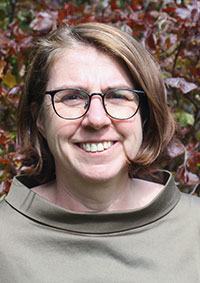05-BGW-GD3 Geodynamic Modelling
Beauftragte/r Katrin Huhn-Frehers
The Geodynamic Modelling module provides basic knowledge in the field of numerical process simulation techniques. Major aim is an introduction into different numerical approaches: granular modelling techniques, e.g. the Discrete Element Methode, and continuum methods, e.g. the Finite Elements Method. This theoretical knowledge will be applied to investigate the deformation processes and mechanics of forearc regions at active margins particularly subduction zones and rifted margins
1) know the basic concepts of modelling philosophy and understand how to build a model
2) comprehend and apply granular simulation techniques; e.g. Discrete Element Method using software packages, e.g. PFC©ITASCA
3) understand the fundamentals of finite element modelling (FEM)
4) can develop independently a FEM model using MATLAB
Grundlagen Angewandte Geophysik / Principles of Applied Geophysics
Course Type 1: Lecture, Exercise (L+E) 2.0 SWS ( 28.0 h)
Course Type 2: Lecture, Exercise (L+E) 2.0 SWS ( 28.0 h)
Tutorial(s): -
Workload:56.0 h presence time
60.0 h self-study
64.0 h exam workload
180 h total workload
combination exam
exam elements: 2
SL: 0
50 % presentation
50 % presentation
1) Turcotte, D. L. & G. Schubert (2002): Geodynamics: Applications of Continuums Physics to Geological Problems. John Wiley and Sons, New York
2) Pöschel, T. (2001) Dynamics of granular systems; Logos, Berlin
3) Zienkiewicz, The finite element method: its basis and fundamentals
4) Gerya: Introduction to numerical geodynamic modelling
Eckdaten
Bachelor Geowissenschaften
Modulart
Wahlpflicht
3. Studienjahr
Anbietender FB
FB5 Geowissenschaften
Modulnutzung
Bachelor Marine Geosciences
Sommersemester
Kurssprache(n)Deutsch und Englisch
6 CP
4 SWS
Kontakt

Ansprechpartner
Prof. Dr. Katrin Huhn-Frehers
MARUM2 3040
 marum.de
marum.deKontakt

Ansprechpartner
Prof. Dr. Katrin Huhn-Frehers
MARUM2 3040
 marum.de
marum.de
